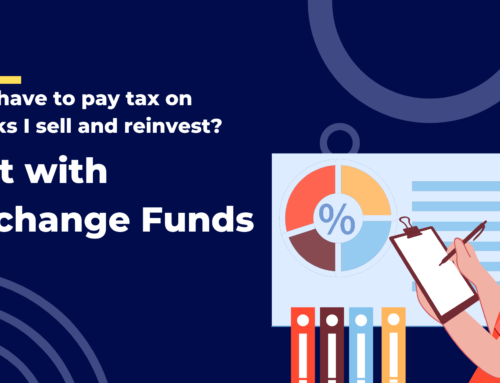As of 2024, when this article was written, if your income is above $161,000 as a single filer or $240,000 as a married filer, sadly, you are not allowed many of the tax breaks the majority of US citizens participate in. This includes a variety of credits and deductions. While high income is a “good problem” to have, it can be a frustrating experience. Stuck in tax limbo. That is why I decided to set out and write a comprehensive guide on how to reduce taxable income for high earners.
All of these tax reduction strategies have been collected from my experience as a financial advisor, real client scenarios, and everything I could possibly find on the internet that was verifiable. You will not get a detailed explanation for these tax strategies. What you will get is enough information and a link to another article that goes into greater detail. Please remember, before you go off and try to apply these strategies yourself, talk with a trusted tax professional like a CPA or Enrolled Agent.
How to reduce taxable income for high earners through your employer benefits:
–
Max your pre-tax 401k:
To reduce your reportable income, you should start with maxing out your pre-tax 401k. Most employers will give you the option of a pre-tax or a Roth 401k. A Roth retirement account has its own benefits but it won’t reduce your income this year. You would contribute to a Roth 401k only if you think that in retirement your income will be higher than it is now. This is true on some occasions and I will leave it to you and your advisors to help you make that evaluation. To get a better sense of why you would choose a pre-tax or a Roth 401k check out THIS article.
Use a Mega-Backdoor Roth:
A mega-backdoor Roth is a strategy to funnel additional income into a Roth account. While contributions to a Roth won’t reduce your income for tax purposes this year, it will allow your money to grow tax-free over time and eventually you can pull it out tax-free as well. Traditionally, you can contribute up to $23,000 into a regular 401k and get a deduction. However, per IRS rules you can contribute up to $69,000 in total to a 401k. But, everything beyond the $23,000 is not tax-deductible. This is where after-tax contributions and in-plan conversions come into play. Not all plans are set up to do this but if yours is you can boost your tax-efficient retirement savings by up to $46,000 a year! HERE is a good article on how a mega-backdoor Roth works. Mega-Backdoor Roth contributions are complicated and we suggest that you get help from a professional if you decide that a Mega-Backdoor Roth Contribution is a tax-saving strategy that is appropriate for you.
Learn how to manage your equity compensation:
Many of our clients get compensated by a variety of types of equity compensation including ISOs, NQSOs, RSUs, and utilize employee benefits like ESPPs. With an alphabet soup of ways to get paid in shares of your employer, and even more ways to make a mistake and blow up your taxes, it is critical you understand your compensation package. The type of equity compensation you have will impact the tax strategies you use both before you own the shares and after. Here are good articles to read on ISOs, NQSOs, RSUs, and ESPPs.
Utilize your HSA, spend out of pocket, invest it:
If you want to learn how to avoid taxes entirely then you should look at the HSA. The HSA is the only triple tax-free account available in the US. You receive a deduction, you invest tax-free, and as long as you spend it on health care cost the distributions are also tax-free. To get the most of the HSA you need to invest it. Don’t assume it is automatically invested. Double-check it. Most HSAs require you to keep at least $1,000 in the cash portion. Everything else you can and should invest. HSAs are best for healthy people that don’t go to the doctor a lot. Beyond that $1,000 in cash you should be paying for all your medical costs out of pocket. Let the balance grow. To help you decide if the HSA is right for you take a look at THIS article.
Use an FSA:
An FSA is a less useful version of an HSA. You can’t invest the money, you can’t even keep most of it if you don’t use it. It needs to be planned intelligently throughout the year. However, it allows you to pay for healthcare, childcare, and fun things like DNA tests and sunglasses. The money you contribute to the FSA does not get taxed. This means that you get a purchase discount equal to your marginal tax bracket. If you want to learn how an FSA works take a look HERE.
Tap into deferred compensation:
If you are a high-level employee such as a Director, you may be eligible for deferred compensation. Deferred compensation allows you to specify a percentage of your salary or bonus to defer into the future. This can be a specific amount of years or when you leave your employer. You can also specify how that income is paid out. It can be all at once or in installments over several years. Finally, you can invest the funds in your deferred compensation plan, allowing them to grow tax-free. A deferred compensation plan is a great tool for shuffling your income from high-income years to potentially lower-income years.
However, unlike a 401k a deferred compensation plan is not your money. If your employer goes bankrupt, the deferred compensation plans are subject to creditors. Finally, if you choose to take another job after you leave your employer, the deferred compensation plan will still payout. This can put you in a very high tax bracket. To learn more about deferred compensation plans check out THIS article.
How to reduce taxable income for high earners using brokerage and IRA accounts:
–
Learn the importance of asset location:
Different investments produce different types of income. Some investments produce ordinary income while others produce long-term capital gains. Some investments are federally tax-free and others are state tax-free. There are three types of accounts you can have. A taxable account, aka a brokerage account, a tax-deferred account, aka a regular IRA, and a tax-free account, aka the Roth IRA. You can make a significant impact on your tax bill by matching the correct investments to the correct type of account. As an example, if you want to invest in real estate in the form of REITs, then you should hold those in a regular IRA. REITs pay frequent dividends which are taxed as ordinary income. Depending on your tax bracket, the incorrect placement of your investments can cost you up to 25% of your annual returns, if not more. To learn more about which investments go where take a look at THIS article.
Tax-efficient investments:
As a high-income earner, and hopefully a diligent saver, you will begin to accumulate a sizable taxable account. It will be important for you to understand what are your options for tax-efficient investments. You will want to understand when you should use municipal bonds issued in your state. You will want to avoid stocks that pay non-qualified dividends. HERE is a list of some of the tax-efficient investments.
Prioritize losses first, then breakeven, followed by long-term capital gains, and finally short-term capital gains:
When it comes to selling investments in your taxable account there is a waterfall schedule you should follow. Taxes should never be the primary force behind what investment you choose to hold and which one you choose to sell. However, if you have the option of selling two or more identical investments you should be thinking about how to reduce taxes with each sale? First, you should sell those investments that have had a loss. This will allow you to offset gains and reduce your ordinary income. Then you should sell those investments at break-even, so you don’t recognize a taxable event. Once you are on to gains you will want to prioritize long-term capital gains due to the favorable tax rate and only then short-term capital gains. Check out THIS article to better familiarize yourself with how capital gains and losses work.
Tax-loss harvest:
Traditional advice states you should buy low and sell high. However, if you want to know how to avoid taxes, you shouldn’t always follow traditional advice. This is the case for tax-loss harvesting. In tax-loss harvesting, you are selling investments at a loss to utilize this loss at another point in time to offset a gain or reduce your ordinary income. To effectively use this strategy you are not going to abandon your losing investment. You are going to find a replacement for it that is similar in nature. Tax-loss harvesting is about using natural market swings to reduce your capital gains income. To learn more about how to execute tax-loss harvesting like a portfolio manager read THIS article.
Gift appreciated investments to Charity:
If you are charitably inclined then you can get a double tax benefit. By donating appreciated investments to a charitable organization you can avoid capital gains and get a tax write-off. A very popular vehicle for executing this strategy is a Donor Advised Fund (DAF). Your contribution to a DAF is tax-deductible in that year. After you have made your donation you can continue to invest and grow your assets in the DAF. You can distribute them to charities of your choice when you wish with some limitations. If you were going to donate cash originally you can now buy more shares of the investment you donated and “reset” your cost basis. HERE is an article we recently wrote about ways to intelligently give appreciated assets to charitable organizations.
Die with gains:
If you know that creating a legacy is important to you then you may consider holding those appreciated investments to the bitter end. As of right now, your beneficiaries will receive a step-up in cost basis on any appreciated investments in taxable accounts. There is always a chance that these securities may lose their value long before then. You must carefully weigh the benefit of holding an appreciated investment vs deciding to sell it at a gain. To better understand how step-up in cost basis works HERE is a good article.
Conversions in low-income years:
One of the tax reduction strategies that work exceptionally well is not making any money. In those years, such as when you take a sabbatical or right after retirement, you may have an opportunity to move your tax-deferred assets into your tax-free accounts. You are using tax arbitrage between now and a hypothetical future where your tax bracket is higher. By comparing your tax bracket now to what you can comfortably estimate your tax bracket will be in the future you can evaluate how much money to move from an IRA to a Roth IRA. Once you pull the tax band aid your future distributions will be tax-free. HERE is an article explaining how conversions work and when you should execute them.
Backdoor Roths:
Similar to a mega-backdoor Roth, a backdoor Roth can be executed without the use of your 401k. Backdoor Roths allow you to stash away money in a tax-free account even though your high income makes you ineligible for direct contributions. To make a backdoor Roth work well you can’t have any existing IRA accounts. That means no traditional or rollover IRAs. All your retirement money must be in a Roth or your employer’s retirement plan. While this will not reduce your income this year it will in years where you are distributing money for retirement needs and it will allow you to avoid annual investment taxes. To understand how backdoor Roths work and why you can’t have existing pre-tax IRA accounts take a look at THIS article.
529s for kids education goals:
529s are a slightly better version of a Roth IRA but are exclusively used for education expenses. Slightly better because the contribution limits are much higher. When you contribute money to a 529 it will grow tax-free and you will not need to pay taxes on the gains once you distribute it as long as you use it for educational costs. In recent years 529’s have been approved for use on K-12 expenses. While federally approved it is not approved for all states. So you may avoid federal taxes but not state taxes when you use a 529 for K-12 expenses. You also need to be careful and try to use up all the money for qualified expenses. If you use 529 funds for other purposes you will end up paying ordinary income tax on gains and a 10% IRS penalty. HERE is a good article to help you understand how to use a 529.
ABLE Account:
If you are providing for a disabled child, the ABLE account allows you to save and invest in a tax-advantaged account. Just like a 529, an ABLE account allows you to invest, grow, and distribute the money tax free. The distributions need to be made for qualified disability expenses which include education, housing, health, basic living expenses, and more. There are a few disability criteria required of the beneficiary to be eligible for an ABLE account. HERE is a great government website that goes into details of who is eligible and for what expenses.
How to reduce taxable income for high earners using Real Estate:
–
Buy a house with a mortgage of up to $750,000:
Probably the largest tax write-off an individual can take is their mortgage interest. Your mortgage interest on a loan up to $750,000 is a line item for itemizing deductions. The higher your income tax bracket the more beneficial this itemization is for you. Let’s say you have a 6% interest rate on your $750,000 mortgage. That is approximately $45,000 of mortgage interest in the first year. If you are in the top federal tax bracket of 37% then you get to put almost $16,650 ($45,000 * 37%) back into your pocket. Combine this with a long loan lifetime and better long-term rates of return on the stock market it is no wonder why many financial advisors recommend you don’t pay off your mortgage ahead of schedule. To get a better grip on how mortgage interest deductions work take a look at THIS article.
Sell to recognize $250/500k of cap gains:
Post-2008 financial crisis the housing market has boomed. Area’s such as California, Colorado, and other pockets of the country have seen massive gains in their real estate market. Taxes should never be the reason to hold on or to sell your home but they are a compelling factor. If you bought your house and you are considering moving, evaluate how much of your appreciation will be excluded from taxes based on IRS Section 121 rule. For individual’s it is $250,000 and for those that are married it is $500,000. As you are evaluating swapping homes consider the fact that while your home appreciated so have others. The more money that is lost to taxes the less your buying power will be. To get familiarized with all the ins and outs of capital gains exclusions for homes take a look at THIS article.
Using investment property rules to swap into other properties:
If you have owned your home for a long time in a high cost of living area your appreciation may be far beyond the capital gains exclusion. You may consider other tax strategies that are available only to investment properties. Specifically the ability to execute a 1031 exchange. The process includes turning your primary residence into a rental property or vice versa. This is a complicated transaction and you should absolutely consult a tax advisor familiar with real estate. However, to get you started HERE is a good article on turning your residential property into an investment property and THIS is a good article on using capital gains exclusion and 1031 exchange together. HERE is an article on using a sale of your rental property to fund a residential property while avoiding taxes from capital gains.
Interest Rate Tracing:
The Tax Cuts and Jobs Act eliminated the ability to deduct interest on home loans not used to buy or improve your first or second residence up to $750,000. As an example, prior to 2018, you could deduct interest on HELOC up to $100,000 no matter what you used it for. Using a cash-out refi to pay off your credit cards or invest in other opportunities also became less attractive. However, a tax strategy called interest rate tracing may help you overcome these rules. Interest rate tracing allows you to deduct the interest on your loan as long as the proceeds are put into an investment. This recharacterizes this interest into investment interest expense. This is directly deductible against your net taxable investment income. As an example, for some of our clients, we use margin borrowing in their portfolios. The margin interest is deductible against their net taxable investment income. This is a complicated rule so HERE is a Deloitte paper on it and THIS is a good article from Schwab on investment interest expense.
Go solar:
As of right now, you can get a dollar-for-dollar tax credit for installing a solar system on your home. 30% until the end of ’32, with reductions leading to an expiration of the benefit in 2035. Unlike a deduction, a credit directly offsets your tax bill. Outside of getting solar energy, which should reduce your energy costs net of the cost of installing your equipment, there are other rebates and state tax benefits. There are tax firms that specialize just in tax write-offs for solar installation. So be sure to ask your solar representative for an introduction. HERE is a good article on solar tax benefits and how to take advantage of them.
Invest in Opportunity Zones:
If you are wondering how to reduce taxes on highly appreciated investments and get access to real estate, then you should explore opportunity zones. Opportunity zones and opportunity zone funds are investments in real estate in economically underdeveloped areas. You can either directly invest or invest in a specially created fund. Most of the contributions to opportunity zone investments come from other appreciated assets like stocks. A federal tax incentive allows you to defer those capital gains for years and potentially erase them. However, opportunity zones require a long holding period of 7 to 10 years and therefore should be considered illiquid, long-term investments. To understand the pros and cons of opportunity zones take a look at THIS article.
Utilize Short-Term Rental Tax Benefits:
One of the more aggressive tax strategies allows you to take your passive losses and use them against your W2 income. At the heart of this strategy is a short-term rental tax loophole that utilizes multiple IRS rules. To take advantage of this tax strategy you must run an Airbnb/VRBO, your average guest stay is less than 7 days, you materially participate in managing the property, you run a cost segregation study to depreciate certain parts of the property quicker, and you use bonus depreciation to get a large depreciation deduction in the first year. The rules and record-keeping are strict and complicated. This is a strategy you will use only if you have a tax advisor on your side. You can read more about this tax loophole in our article HERE.
Other tax reduction strategies:
–
Give to Charity:
If you are charitably inclined then you will benefit from any donations you make to charitable organizations. While it’s best to donate appreciated investments, different types of donations have their own pros and cons. This includes how you value the gift for the tax deduction to how much of your taxable income for the year you can reduce. To get familiar with all types of assets you can donate and the rules behind them check out THIS article.
Move to a different state:
There are several states in the US that don’t have a state income tax. This includes Washington, Texas, Nevada, Florida, Alaska, South Dakota, Tennessee, and Wyoming. Before you decide to move away you need to understand what constitutes state residency. Residence can be determined by how long you have lived there, where your property resides, even where your pets stay. No-state-tax states also need to make tax money. Therefore, there are other tax ramifications you need to consider and evaluate. Finally, with equity compensation, the state tax rules are far from simple. The state in which your equity was granted/vested may still have the final say as to what tax bill you pay. To get some understanding of what it takes to move to a no-state-tax state take a look at THIS article.
Start a business:
The best tax breaks are in a business, however, we do not suggest you start a business just to save on taxes! A variety of expenses become write-offs against income. There are countless tax rules that allow you to reduce your income. You can buy vehicles at steep tax discounts. You can wash away millions of capital gains on the sale of your business. The list goes on and on. Business tax is significantly more complicated and fraught with audits and IRS scrutiny. This is why you should have a good tax advisor by your side. HERE is a list of some tax benefits business owners get.
(Extra Credit) Tweak your w-4 or work with a CPA estimated taxes:
While not a tax reduction strategy, everyone hates owing a giant tax bill on April 15th. Alternatively, not as hated, is being owed a giant check by the IRS. The former means you didn’t pay enough and the latter means you gave the IRS an interest-free loan. Neither is appealing. To get it just right you have two options. You can either work with a tax advisor to pay quarterly estimated taxes, and in some cases, you have to, or you can adjust your tax withholding through your employer’s w-4 form. The IRS even provides THIS calculator to help you figure out the adjustments you need to make. HERE is an article on quarterly estimated taxes and who has to pay them.
Summary
How to reduce taxable income for high-income earners has been a question financial advisors have been answering every year for as long as the profession existed. Every year tax rules change. Everybody’s financial situation is different so, these tax reduction strategies don’t work for everyone. They are not going to be appealing to everyone. This list is here for you to become aware and self-reflect on what you can do.
If you want some help with that reflection and application then click HERE and let us guide you through your tax reduction journey.






